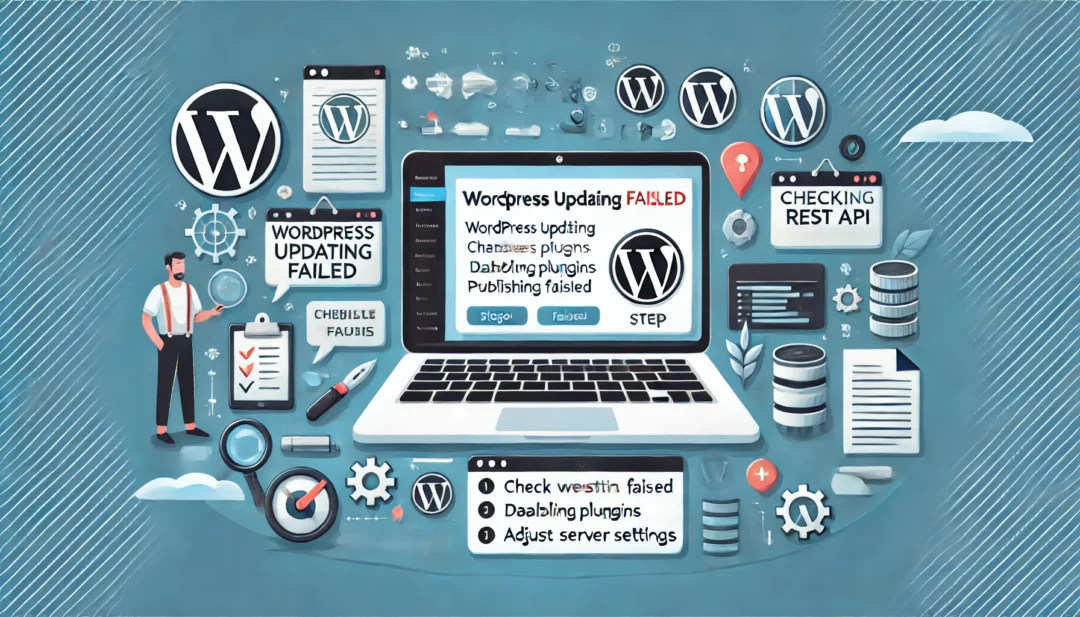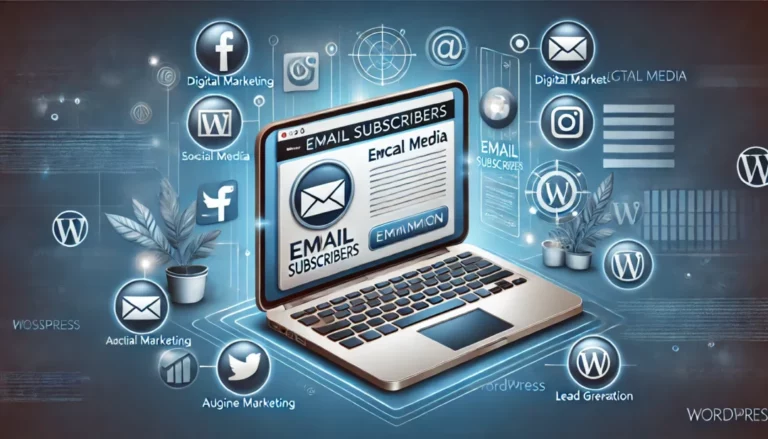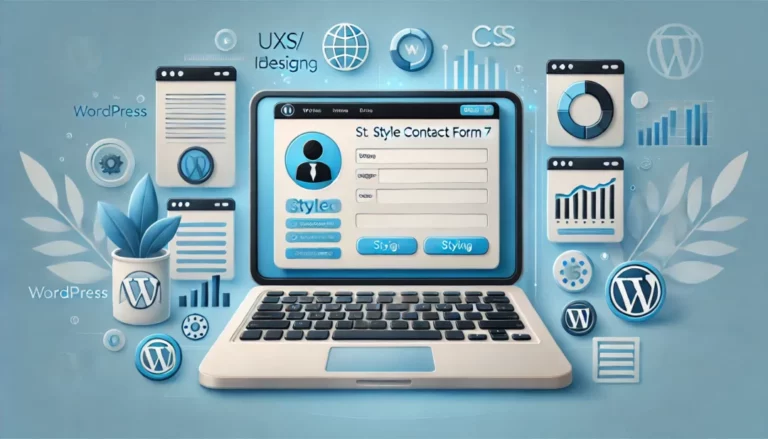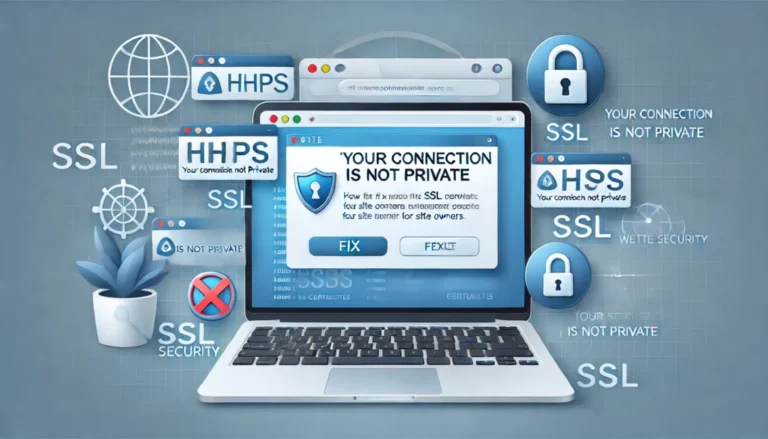
Encountering the “Updating Failed” or “Publishing Failed” error in WordPress can be frustrating, especially when you’re trying to keep your site running smoothly. This issue often stems from misconfigurations or connectivity problems, but the good news is it’s fixable with some straightforward steps. Whether you’re a beginner or an experienced user, you can troubleshoot and resolve this error quickly.
In this guide, you’ll learn how to identify the root cause and implement practical fixes. From checking your internet connection to adjusting WordPress settings and resolving REST API issues, each step is designed to get your site back on track. By following these solutions, you’ll not only fix the error but also ensure a smoother publishing experience moving forward.
Understanding The WordPress Updating Failed Publishing Failed Error
This error occurs when WordPress encounters issues during the update or publishing process. It can disrupt your workflow and prevent content from being saved or published. Commonly, this error stems from server configuration problems, network connectivity issues, or incompatibilities with WordPress features like the REST API.
REST API Blockage: A functional REST API is essential for WordPress to interact with the server. If blocked, the communication halts, causing this error.
Internet Connectivity Issues: A weak or unstable internet connection can interfere with WordPress updates and publishing tasks.
Permalink Structure Problems: Incorrect or incomplete permalink settings can disrupt URL generation, triggering the error.
Plugin or Theme Conflicts: Outdated or incompatible plugins and themes can cause functionality errors in WordPress.
Misconfigured Server Settings: Insufficient PHP memory, improper file permissions, and other server-side issues can also result in this error.
Properly identifying the reason behind the error is critical. By pinpointing the cause, you can apply the appropriate troubleshooting steps and restore WordPress functionality.
Common Causes Of The Error
Several underlying factors commonly trigger the “Updating Failed” or “Publishing Failed” error in WordPress. Identifying these causes helps in implementing the appropriate corrective steps.
Internet Connection Issues
A weak or unstable internet connection often leads to publishing errors in WordPress. The platform requires continuous connectivity to save or update changes on servers. If your connection is intermittent or slow, publishing requests may time out, resulting in this error.
- Tip: Test your connection by loading other websites or using an internet speed test tool. Switch to a more stable network if problems persist.
Plugin Or Theme Conflicts
Conflicts arise when plugins or themes are outdated, poorly coded, or incompatible with your WordPress version. These conflicts disrupt normal functionality and may prevent updates or publishing.
- Action: Deactivate all plugins temporarily. Reactivate them one by one and retry publishing after each activation. For themes, switch to a default WordPress theme like Twenty Twenty-Three.
- Alternative: Update all plugins and themes to their latest versions to minimize compatibility issues.
Site URL Or Permalink Problems
Invalid Site URL or permalink settings interfere with WordPress functionalities, including publishing posts. Permalinks define the structure of URLs, and incorrect configurations break server-side processes.
- Action: Navigate to Settings > General in your WordPress dashboard and ensure the Site URL and WordPress Address URL match. Adjust permalinks in Settings > Permalinks by selecting another structure and saving changes.
REST API And JSON Response Errors
The REST API is integral to WordPress for server communication. Errors with the API or malformed JSON responses prevent data exchanges, causing update and publishing failures.
- Action: Use the Site Health Tool under Tools > Site Health to check for REST API availability. Resolve flagged issues like misconfigured security plugins blocking REST requests.
- Advanced Tip: Inspect browser console logs for API errors. Correct server permissions or contact your hosting provider if needed.
Step-By-Step Guide To Fix The Error
Follow these steps to troubleshoot and resolve the “Updating Failed” or “Publishing Failed” error in WordPress. Address each issue methodically to restore publishing functionality.
Check Your Internet Connection
Ensure stable internet connectivity to prevent publishing interruptions. Use the following steps:
- Test Your Network Speed: Use tools like Speedtest to confirm your connection is stable. Avoid slow or intermittent networks.
- Switch Networks: Connect to a different Wi-Fi or mobile data network if issues persist.
- Disable VPNs or Firewalls: These tools may block server requests. Temporarily disable them while testing WordPress.
Debug Plugin And Theme Conflicts
Conflicting plugins or themes often disrupt WordPress functionality. Debug these conflicts:
- Deactivate All Plugins: Use the dashboard to deactivate all installed plugins.
- Navigate to Plugins → Installed Plugins.
- Select all plugins, then click Deactivate.
- Test Publishing: Attempt to publish a post. If successful, reactivate plugins one by one and test each time.
- Switch To Default Theme: Temporarily switch to a WordPress default theme like Twenty Twenty-Three. Check publishing functionality again.
- Update Resources: Update all plugins and themes to their latest versions to eliminate compatibility issues.
Verify Site URL And Permalinks
Incorrect URL or permalink settings can trigger this error. Confirm these configurations:
- Check WordPress Address (URL): Go to Settings → General and ensure the WordPress Address (URL) and Site Address (URL) match.
- Regenerate Permalink Structure: Reset permalinks under Settings → Permalinks.
- Select a default option, save settings, and revert to your preferred structure.
- Clear Cache: Clear browser and plugin caches after making changes to prevent outdated data from causing issues.
- Use Site Health Tool: Check REST API availability via Tools → Site Health. Address flagged issues like missing server modules.
- Verify Server Configuration: Ensure your server meets WordPress requirements, including running PHP 7.4 or higher. Contact your hosting provider if necessary.
- Fix Blocks By Security Plugins: Configure security plugins properly, as they may block REST API requests. Review and adjust their settings.
- Check .htaccess File: Reset or repair the .htaccess file in your root directory. Misconfigurations often block API functionality.
Additional Troubleshooting Tips
Explore other fixes when standard troubleshooting fails to resolve the “Updating Failed” or “Publishing Failed” error. These advanced tips address deeper system-level issues affecting WordPress.
Increase PHP Memory Limit
Expand your PHP memory allocation if WordPress encounters memory exhaustion. Low memory limits can interrupt processes required for updating or publishing.
- Edit the wp-config.php File: Access your WordPress installation files via FTP or a file manager, locate the
wp-config.phpfile, and add the following line:
define('WP_MEMORY_LIMIT', '256M');
Save and upload the file.
2. Modify php.ini Settings: If server access allows, locate or create a php.ini file and include:
memory_limit = 256M
3. Contact Hosting Provider: Request an increase in PHP memory limits if manual changes aren’t possible.
Verify if the error persists after increasing memory.
Check For Server Configuration Issues
Server misconfigurations often affect core WordPress functionality. Analyze server settings and adjust as needed.
- Inspect ModSecurity Rules: Disable ModSecurity temporarily by adding this directive to your
.htaccessfile:
<IfModule mod_security.c>
SecFilterEngine Off
SecFilterScanPOST Off
</IfModule>
Check if publishing works as expected, but re-enable it afterward.
2. Review Firewall Restrictions: Firewalls blocking specific IPs or ports may hinder REST API calls. Whitelist required endpoints or IPs used by WordPress.
3. Enable Debug Mode: Set WP_DEBUG to true in your wp-config.php file to check PHP errors or server logs for specific issues.
4. Check SSL/TLS Settings: Ensure proper SSL configurations if you use HTTPS. Mismatched certificates or outdated protocols can disrupt server connections.
Work closely with your hosting provider for advanced server diagnostics.
Update WordPress Core, Plugins, And Themes
Ensure all WordPress components are up-to-date to avoid compatibility errors that trigger publishing issues.
- Update WordPress: Navigate to Dashboard > Updates and install the latest WordPress version.
- Update Plugins: Update all active plugins. Avoid bulk updates; instead, verify functionality after updating each plugin.
- Update Themes: Switch to a default theme temporarily, then update your primary theme to prevent conflicts.
- Check for Obsolete or Incompatible Add-ons: Replace plugins or themes no longer receiving updates or marked incompatible with your WordPress version.
Employ these updates to fix compatibility-related errors and maintain optimal site performance.
Preventing This Error In The Future
Avoiding the “Updating Failed” or “Publishing Failed” error requires proactive measures. Regular maintenance, reliable resources, and backups ensure your WordPress site operates smoothly and minimizes errors.
Regular Maintenance And Updates
Keep WordPress, plugins, and themes updated. Updates contain bug fixes, security patches, and compatibility improvements. For example, update your WordPress core as soon as a new version becomes available. Schedule plugin and theme updates monthly to minimize conflicts and incompatibility risks.
Regularly monitor your site performance using tools like WP-Optimize. Check for database clutter, excessive drafts, or unused resources and remove unnecessary files. Maintaining a clean environment reduces potential errors.
Using Reliable Plugins And Themes
Install plugins and themes from trusted sources like WordPress.org or reputable developers. Review ratings, active installations, and customer feedback before downloading. For example, choose plugins with over 10,000 active users and 4+ star ratings to ensure reliability.
Avoid piling unnecessary plugins that can cause conflicts. Use multi-purpose tools or combine functionalities into fewer plugins. If a plugin or theme is outdated or unsupported, replace it with updated alternatives to boost stability.
Backup Strategies For Your WordPress Site
Create regular backups using plugins like UpdraftPlus or BackupBuddy. Schedule weekly or bi-weekly backups based on your site’s activity level. Save these backups to secure locations like cloud storage or external drives.
Test restoration processes to ensure backups are functional. If server configurations change or sites encounter errors, you can restore functionality quickly without losing data. Prioritize backups before significant updates or installations to avoid unexpected downtime.
Conclusion
Fixing the “Updating Failed” or “Publishing Failed” error in WordPress might seem daunting at first, but with the right approach, it’s entirely manageable. By addressing common causes like connectivity issues, plugin conflicts, or misconfigured settings, you can restore your site’s functionality quickly.
Regular maintenance and proactive measures are key to preventing future errors. Keep your WordPress core, plugins, and themes updated, monitor your site’s health, and always use reliable tools. With these steps, you’ll ensure a smoother publishing experience and reduce the chances of encountering similar issues down the line.
Frequently Asked Questions
What does the “Updating Failed” or “Publishing Failed” error in WordPress mean?
This error occurs when WordPress cannot save or publish your content due to connectivity issues, misconfigurations, or conflicts with themes, plugins, or server settings.
What causes the “Updating Failed” or “Publishing Failed” error?
Common causes include unstable internet connections, REST API issues, outdated plugins or themes, incorrect Site URL or permalinks, and server misconfigurations.
How can I fix the “Updating Failed” error caused by an unstable internet connection?
Check your internet speed, switch to a more stable network, and disable any VPNs or firewall settings that may interfere with the connection.
How do I resolve plugin or theme conflicts causing this error?
Deactivate all plugins and switch to a default WordPress theme. Reactivate them one by one to identify the conflicting resource. Update all plugins and themes to their latest versions.
How can I fix permalink and Site URL issues related to this error?
Go to Settings > Permalinks in WordPress, regenerate the permalink structure, and ensure that the Site URL in the dashboard matches your actual website address.
What role does the REST API play in this error?
The REST API enables server communication in WordPress. If it’s unavailable or misconfigured, publishing and updating errors may occur. Use the Site Health Tool to check and resolve REST API issues.
How do I troubleshoot server-related configuration problems?
Check server settings, review your .htaccess file for misconfigurations, and ensure you’ve updated server limits like PHP memory if necessary. Consult your hosting provider for assistance.
Can caching issues lead to the “Updating Failed” error?
Yes, outdated cache data can interfere with publishing. Clear your browser cache and any caching plugins used on your site to resolve this problem.
What advanced methods can I try if standard fixes don’t work?
Increase your PHP memory limit through the server control panel or by editing the wp-config.php file. Also, consult your hosting provider to ensure proper server configurations.
How can I prevent the “Updating Failed” error in the future?
Regularly update WordPress core, plugins, and themes. Use reliable resources, monitor site performance, maintain backups, and avoid unnecessary plugins to reduce compatibility issues.






